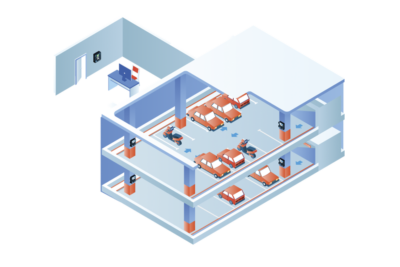Enclosed Parking Facilities
Continuous monitoring of Carbon monoxide and Nitrogen dioxide in parking garages
Parking facilities vary in size, design, location and the number and type of cars coming and going. Unlike open parking lots, underground parking or parkades rely on a ventilation system to bring in fresh air and purge the vehicle exhaust buildup inside the building. If the facility is not ventilated properly, it can become a hazardous environment as vehicle exhaust from idling cars and slow moving cars trying to find a place to park collects in the enclosed area. Carbon monoxide is the most abundant of the exhaust fumes, but there is also the possibility for Nitrogen dioxide from diesel powered engines. To provide a safe, breathable parking facility and minimize energy costs associated with the operation of the ventilation system, a hazardous gas detection system is necessary.
![]() cGas-SC-VFD-Application-Brochure-Parking-Garage
cGas-SC-VFD-Application-Brochure-Parking-Garage

KEY CONSIDERATIONS
- The gas detection system operates ventilation systems, on demand controlled
- One gas detector provides coverage of up to a 50 ft / 17 m radius with 360-degree coverage
- Alternate fuel vehicles that use natural gas, methanol, ethanol, etc. also produce carbon monoxide exhaust
TARGET GASES
- Carbon Monoxide (CO)
- Nitrogen Dioxide (NO2)
- Methane (CH4) or Propane (C3H8)

